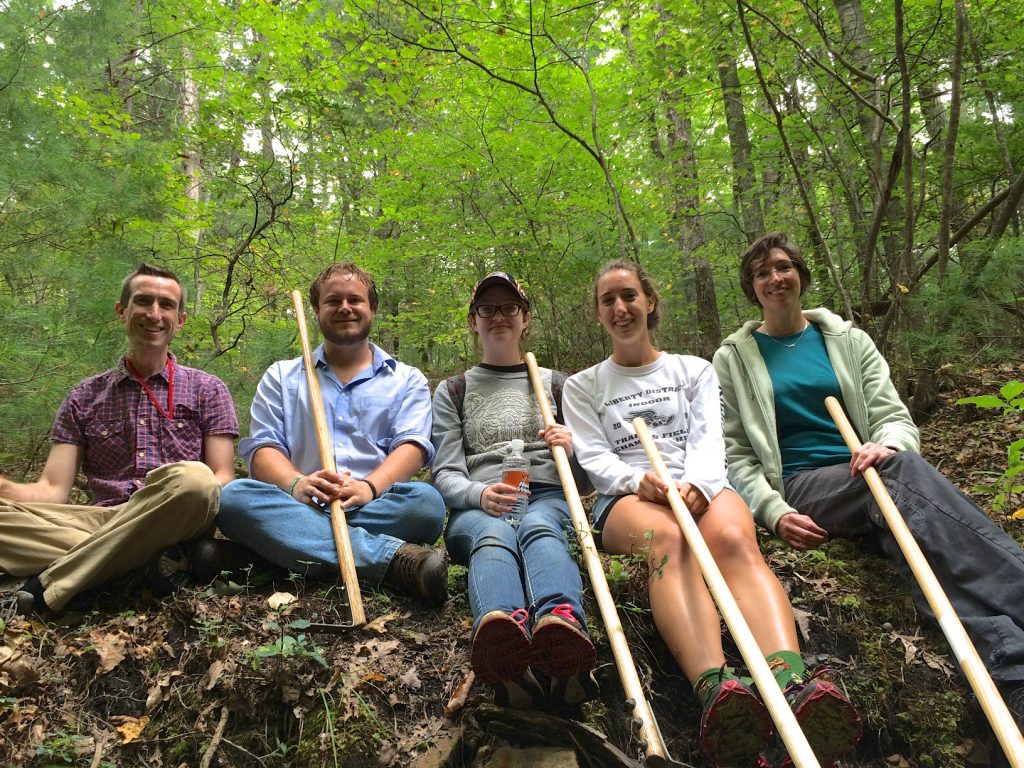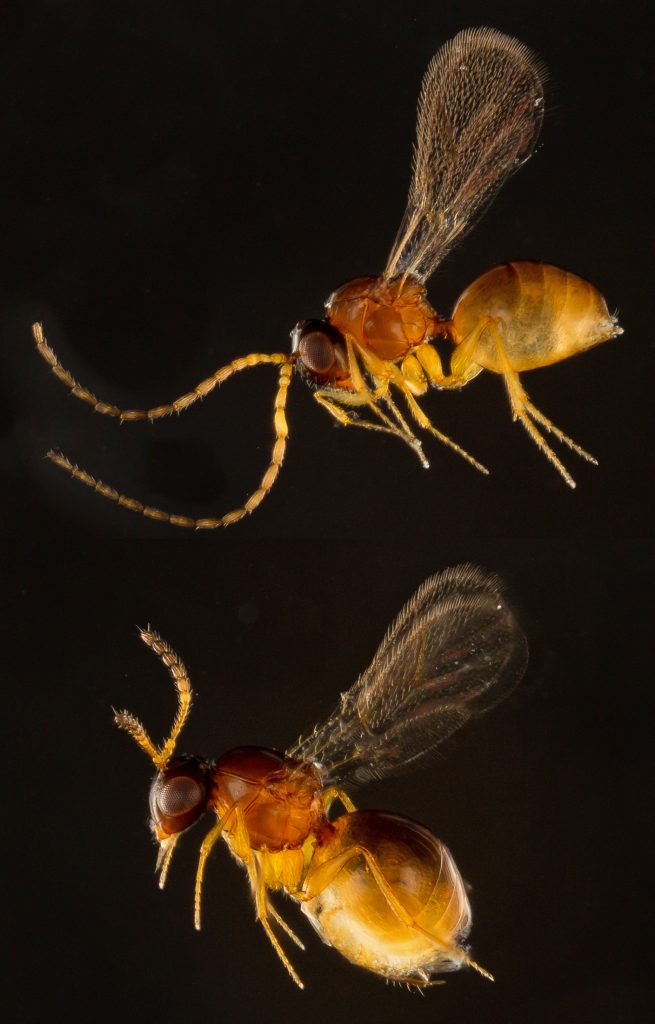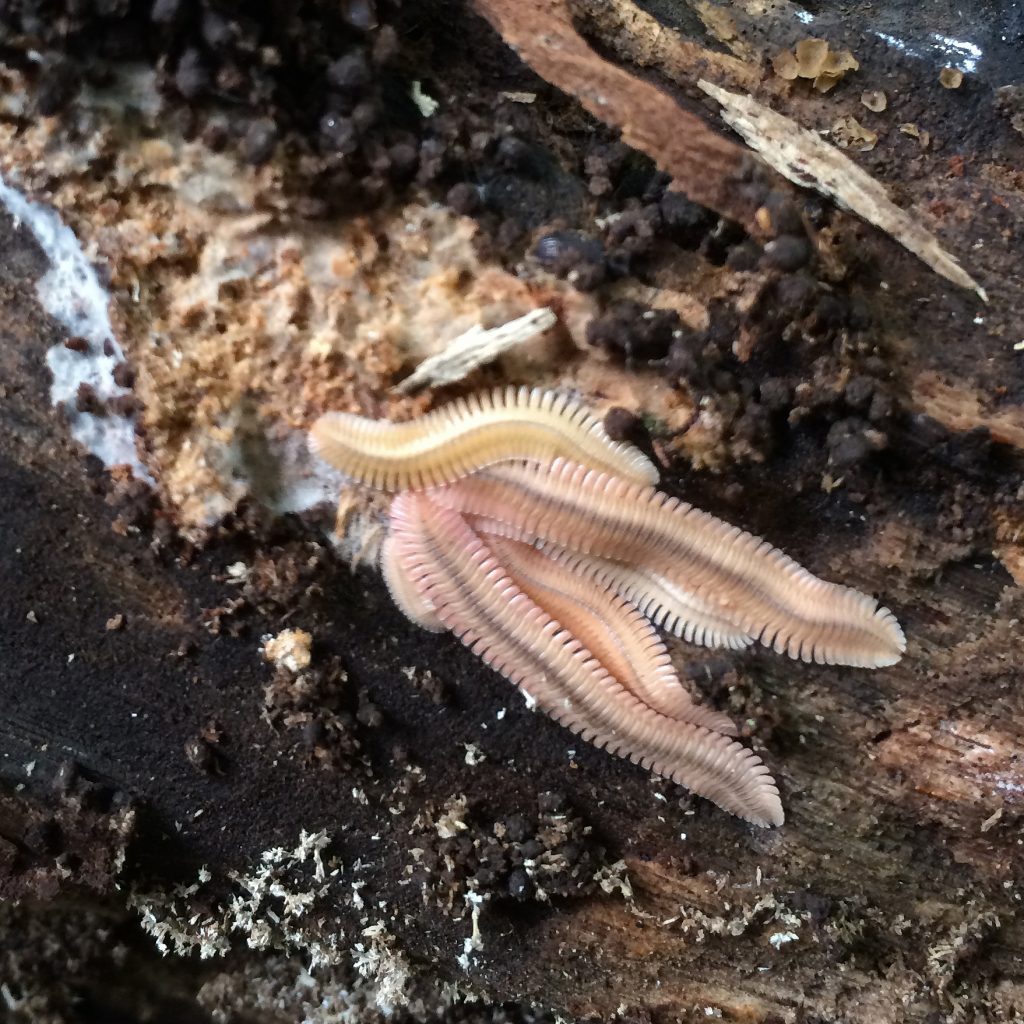
(left to right) Paul Marek, Jackson Means, Katy Lawler, Nina Zegler and Elizabeth Francis
On Friday, we collected millipedes on Brush Mountain near Blacksburg, Virginia. We found the genera Narceus, Pseudopolydesmus, Apheloria, Rudiloria, and Nannaria. Other fascinating discoveries included several species of plethodontid salamanders, a large imperial moth caterpillar, a giant crayfish, cryptocercid cockroaches, and an aggregation of dancing Beech blight aphids.



